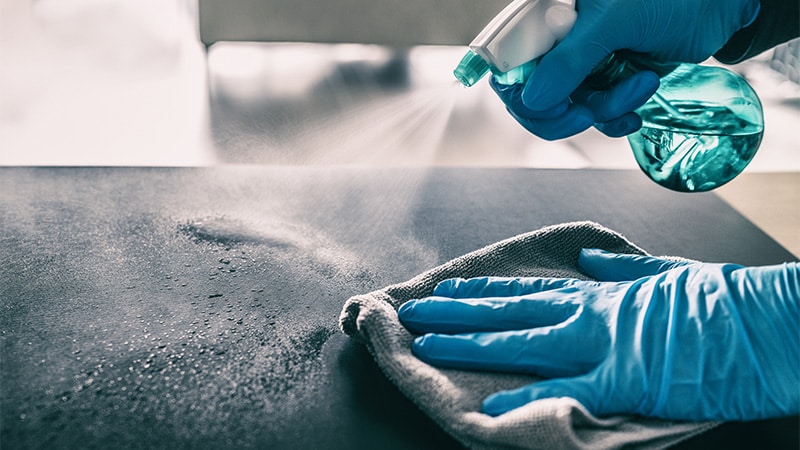Globally, as of June 22, the number of patients with monkeypox has risen to 3308, according to the US Centers for Disease Control and Prevention. In Germany, 521 people have been infected to date. “There does not seem to be a monkeypox pandemic,” writes Germany’s Federal Minister of Health Karl Lauterbach, MD. At the moment, the probability that doctors will see a patient infected with the monkeypox virus is quite small. Nevertheless, healthcare professionals should be prepared. The Robert Koch Institute (RKI), a German federal government agency, has compiled suggestions for inpatient and outpatient sectors.
Characteristics of the Virus
All hygiene measures are oriented around the currently known characteristics of the monkeypox virus. According to the RKI, skin or mucosal contact with infectious material from the skin lesions of an infected person plays a key role in human-to-human transmission.
The virus remains biologically active for a certain amount of time, even in dried flakes of skin or dried secretion. Therefore, in general, “careful and thorough cleaning and disinfection of the patient environment or surfaces is necessary,” writes the RKI. Droplet infections or contaminated surfaces are less often of importance.
Basic Hygiene Measures
“Fundamentally, all basic hygiene measures should of course be followed when dealing with the infected,” says the RKI. Doctors and other healthcare professionals should use hand sanitizer with proven, at least viricidal, efficacy.
Manufacturers provide such details on the packaging. Both the RKI and the Association for Applied Hygiene (VAH) have published compilations.
Measures in Medical Practices
In the outpatient sector, there is the (currently still quite low) danger that patients with monkeypox will infect other patients or practice employees. To prevent this, the RKI advises organizational measures.
If employees suspect that patients have monkeypox when they first arrive at the practice, or when they first speak to them over the phone, they must be separated. Waiting and treatment rooms with surfaces that can be wipe-disinfected are well suited for this. Even if only suspected, all employees should wear disposable gloves and mouth-and-nose protection, which has become standard during COVID.
Measures in the Clinical Sector
In terms of accommodation, the RKI recommends isolation rooms with a washroom and, if possible, an antechamber that doctors and nurses can use to put on and take off their personal protective equipment (PPE). PPE includes disposable gloves, mouth-and-nose protection (for direct treatment, at least an FFP2 mask), and protective eyeglasses.
Special attention should be paid to the disinfection of surfaces. In addition to the selection of suitable preparations (see above), the RKI advises that the high stability of the virus, especially in skin particles, be taken into account. When cleaning, particular care should be taken not to disturb any particles, according to the recommendations. In addition, the manufacturer’s application time must be strictly observed.
In the inpatient sector, such measures are important for all surfaces close to patients, such as bedside tables, wet zones, or door handles.
Medical devices such as stethoscopes or electrodes should be disinfected immediately after use. If possible, thermal treatment is preferred, such as for surgical apparatus, as long as they are not disposable products. The RKI has compiled separate recommendations for medical devices.
For laundry such as towels or bed linen, there is the danger that infectious particles will be stirred up. They should be collected and transported for treatment in sealable bags. Details on the selection of preparations can be found in the RKI or VAH list.
Contaminated waste is classified under waste code ASN 18 01 03 (“Guidelines for disposal of waste from healthcare institutions”) and may only be destroyed thermally in suitable facilities.
This article was translated from the Medscape German edition.
